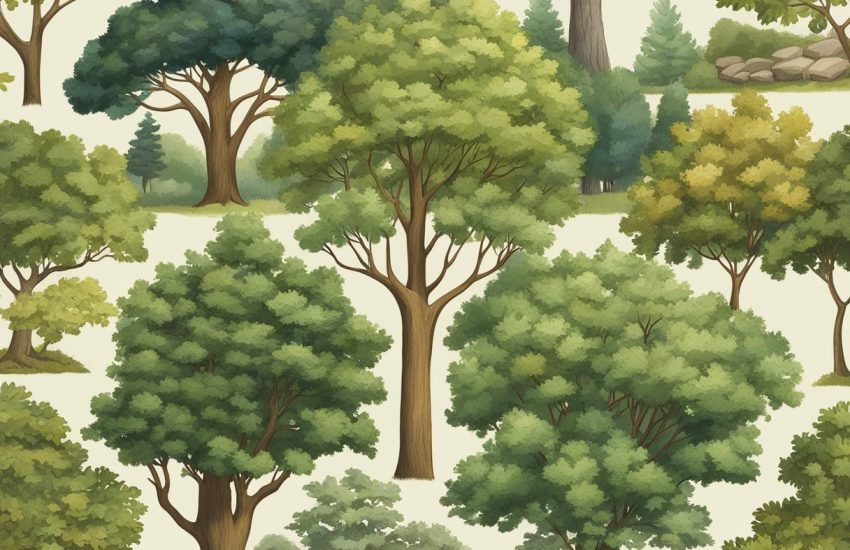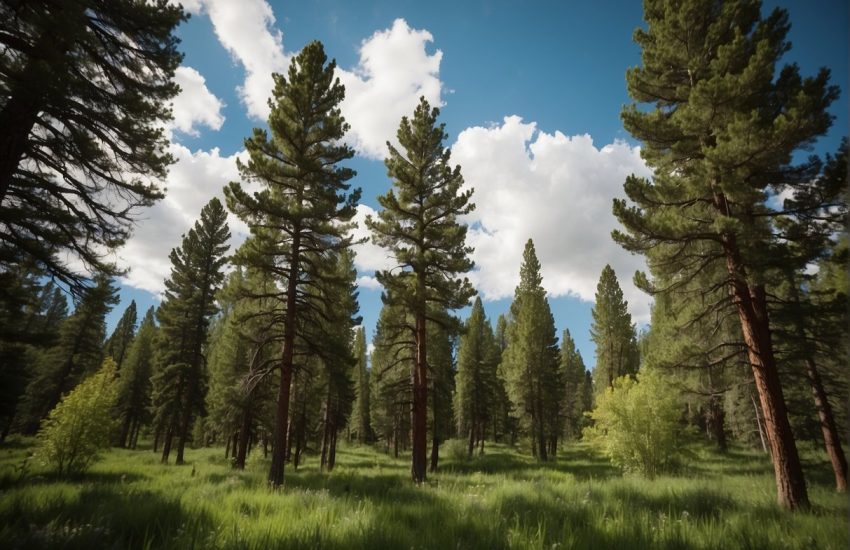Maple Trees in Pennsylvania: Species, Characteristics, and Best Places to See Them
Maple trees are a common sight in Pennsylvania’s forests and yards, known for their vibrant fall foliage and sweet sap used to make maple syrup. The state is home to both native and non-native species of maple trees, each with unique characteristics and uses.

Pennsylvania’s native maple species include the sugar maple, red maple, and silver maple. Sugar maples are highly valued for their sap, which is collected in the spring and boiled down to create maple syrup. Red maples are known for their brilliant red fall foliage, while silver maples have fast growth rates and are often planted for their shade. Non-native species of maple trees, such as the Norway maple and Japanese maple, have also been introduced to Pennsylvania and can be found in parks and gardens throughout the state.
In addition to their aesthetic and culinary uses, maple trees play an important ecological role in Pennsylvania’s forests. They provide habitat and food for wildlife, and their leaves and branches contribute to the nutrient cycle of the forest floor. As such, maple trees are an important part of Pennsylvania’s natural heritage and are valued by residents and visitors alike.
Species and Classification

Native Maple Species
Pennsylvania is home to several native species of maple trees, including the Acer saccharum (sugar maple), Acer rubrum (red maple), and Acer pensylvanicum (striped maple). These trees are well adapted to the local climate and soil conditions, and can be found in a variety of habitats throughout the state.
The sugar maple is perhaps the most iconic of Pennsylvania’s native maples, known for its brilliant fall foliage and its sweet sap, which is used to make maple syrup. The red maple is also a common sight in the state, with its greenish-yellow flowers and distinctive lobed leaves. The striped maple, on the other hand, is a smaller tree that is often found in the understory of forests, with its greenish-yellow flowers and winged fruits.
Non-Native Maple Species
In addition to the native species, several non-native maple trees have been introduced to Pennsylvania over the years. The Acer platanoides (Norway maple) is one such species, and is often planted as an ornamental tree due to its attractive foliage and tolerance for urban conditions. However, it can also be invasive and outcompete native species in some areas.
Identifying Characteristics
Maple trees are generally easy to identify, with their distinctive lobed leaves, winged seeds (samaras), and smooth or furrowed bark. However, there are some key differences between the various species that can help with identification.
For example, the sugar maple has five-lobed leaves with deep notches between the lobes, while the red maple has three-lobed leaves with more shallow notches. The silver maple (Acer saccharinum) has deeply lobed leaves that are more finely toothed than those of the sugar maple.
In terms of bark, the Norway maple has a smooth grayish-brown bark with shallow furrows, while the striped maple has a distinctive greenish-brown bark that is striped with white. Twigs can also be helpful for identification, with the Norway maple having stout twigs that are reddish-brown in color, while the striped maple has slender twigs that are greenish-brown.
Ecology and Cultivation
Growth and Habitat
Maple trees are deciduous trees that are native to North America. They are commonly found in Pennsylvania and are known for their beautiful fall foliage. The height of a maple tree can vary greatly depending on the species, with some growing as tall as 100 feet.
There are both native and non-native species of maple trees in Pennsylvania. Some non-native species have become invasive and can outcompete native species. Maple trees prefer partial shade to full sun and moist soil. They can also grow as an understory tree in forests.
Maple trees are often used in landscaping as a shade tree due to their oval crown and beautiful fall color. They are also popular ornamental trees. In addition, maple wood is highly valued for its use in furniture and flooring.
Maple Tree Uses
Maple trees are an important species in Pennsylvania and are often referred to as the keystone state tree. They are also an important food source for deer and other wildlife, as they are fast-growing and provide browse.
There are several species of maple trees in Pennsylvania, including the mountain maple and box elder maple. The mountain maple has a short trunk and is often found in the mid-Atlantic region. The box elder maple is drought-tolerant and prefers well-drained soil.
Overall, maple trees are a valuable species in Pennsylvania and are appreciated for their beauty and usefulness.


